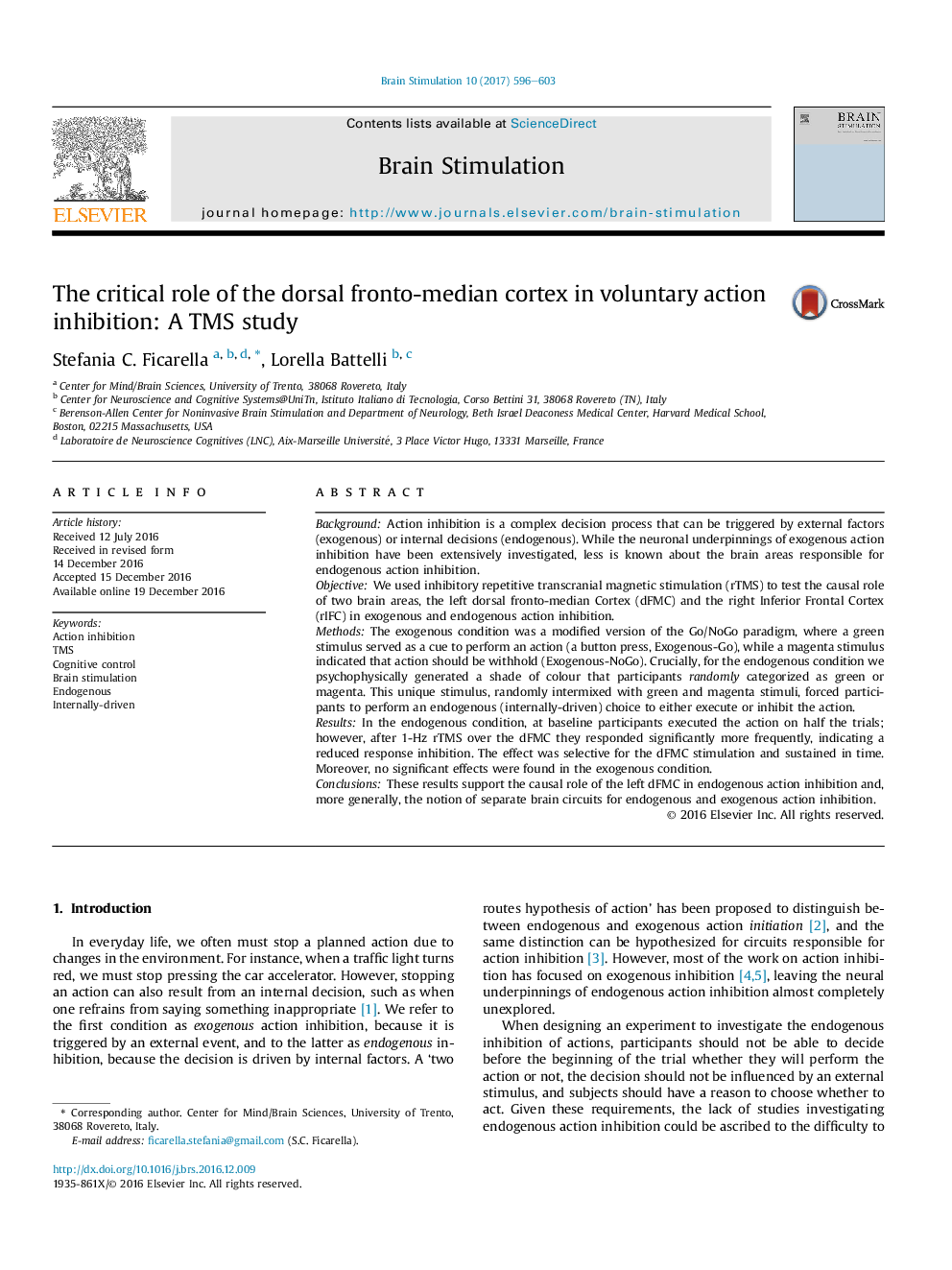| کد مقاله | کد نشریه | سال انتشار | مقاله انگلیسی | نسخه تمام متن |
|---|---|---|---|---|
| 5626852 | 1406329 | 2017 | 8 صفحه PDF | دانلود رایگان |

- rTMS over the dFMC impaired the ability to inhibit internally-driven actions.
- rTMS had no effect on externally-driven actions.
- Inhibition of endogenous actions highlights how the brain exerts cognitive control.
- Psychiatric disorders cause impairments in the ability to inhibit compelling urges.
- Studying the cortical circuits of endogenous actions provides insights for treatments.
BackgroundAction inhibition is a complex decision process that can be triggered by external factors (exogenous) or internal decisions (endogenous). While the neuronal underpinnings of exogenous action inhibition have been extensively investigated, less is known about the brain areas responsible for endogenous action inhibition.ObjectiveWe used inhibitory repetitive transcranial magnetic stimulation (rTMS) to test the causal role of two brain areas, the left dorsal fronto-median Cortex (dFMC) and the right Inferior Frontal Cortex (rIFC) in exogenous and endogenous action inhibition.MethodsThe exogenous condition was a modified version of the Go/NoGo paradigm, where a green stimulus served as a cue to perform an action (a button press, Exogenous-Go), while a magenta stimulus indicated that action should be withhold (Exogenous-NoGo). Crucially, for the endogenous condition we psychophysically generated a shade of colour that participants randomly categorized as green or magenta. This unique stimulus, randomly intermixed with green and magenta stimuli, forced participants to perform an endogenous (internally-driven) choice to either execute or inhibit the action.ResultsIn the endogenous condition, at baseline participants executed the action on half the trials; however, after 1-Hz rTMS over the dFMC they responded significantly more frequently, indicating a reduced response inhibition. The effect was selective for the dFMC stimulation and sustained in time. Moreover, no significant effects were found in the exogenous condition.ConclusionsThese results support the causal role of the left dFMC in endogenous action inhibition and, more generally, the notion of separate brain circuits for endogenous and exogenous action inhibition.
Journal: Brain Stimulation - Volume 10, Issue 3, MayâJune 2017, Pages 596-603